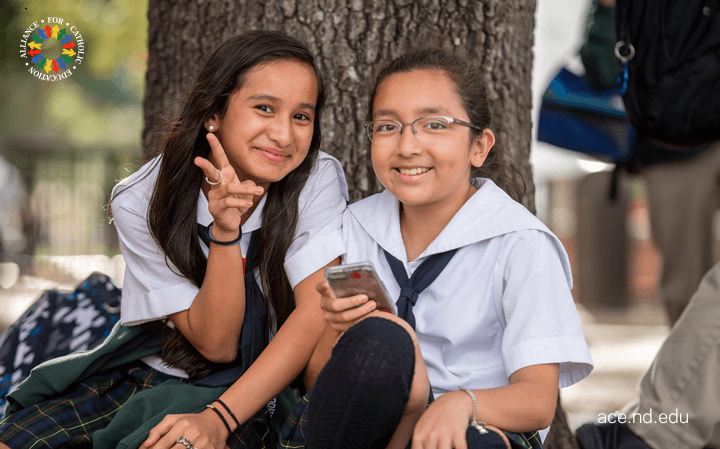I just returned from three very full days of professional development with our Blended Learning Advancement and Strategy Teams from the Notre Dame ACE Academies in Indianapolis, and I am feeling so many things: grateful for the amazing group of teachers and leaders and their incessant hard work; proud of how far we have come in just one year; and hopeful for the future of the students in these innovative schools.
I have informally described this year's professional development as the way we are helping our BLAST teachers move from blended learning 1.0 to blended learning 2.0. What does that mean, you may ask–read on to find out!
Blended Learning 1.0
In the first year of blended learning for these schools, we focused almost exclusively on the basics. Our teachers devoted enormous amounts of time and energy to developing a model of blended learning that worked for them and their students. Professional development focused on everything from forming groups to transitioning between different learning activities to helping students develop independent learning skills to reading data from multiple online programs. Needless to say, the first year has been PACKED with learning, but our seemingly tireless teachers had no intention of stopping there.
As one of the teachers said at the beginning of this week, "I'm ready for more. I've come to the point where I feel like I can do the transitions and the groups and all of the basics, so now I want to know what's next."
Blended Learning 2.0
 This week was all about figuring out, "What's next?" We wanted to learn how to truly use all of the benefits of the blended learning model to accomplish our schools' audacious goals. To start, we spent some time figuring out where we saw problems of practice and where we were already on track to meet our goals. The teachers engaged in focused, collaborative data review sessions that allowed them to identify their own strengths and areas for growth to focus on throughout the rest of the week and next school year. They kept these in mind as they evaluated their progress towards their goals and articulated their next steps.
This week was all about figuring out, "What's next?" We wanted to learn how to truly use all of the benefits of the blended learning model to accomplish our schools' audacious goals. To start, we spent some time figuring out where we saw problems of practice and where we were already on track to meet our goals. The teachers engaged in focused, collaborative data review sessions that allowed them to identify their own strengths and areas for growth to focus on throughout the rest of the week and next school year. They kept these in mind as they evaluated their progress towards their goals and articulated their next steps.
The second day was all about how to improve the quality of instruction students receive in a blended-learning classroom. We discussed the design of effective learning environments, best practices unique to each teacher, the gradual release into blended lessons, and increasing the rigor of independent and collaborative work. The teachers had time to work with one another and to apply these concepts to lesson plans in their own classroom.
Finally, we brainstormed new ways to encourage students to own their data and progress through student meetings and how to implement effective coaching plans at each school. The BLASTs generated new tools to use for student conferences, such as data tracking sheets and meeting schedules, and concrete coaching plans that they can put into place as soon as this school year begins.
Are you tired just from reading about all of the hard work our BLASTs did? I think I might be! I could not have been more impressed with the positive attitudes and willingness to work our team members brought every day. The BLAST members ended the week with many new resources under their belts and fires of determination inside of them. I am beyond excited to watch these teachers move from blended learning 1.0 to 2.0 this year. Stay tuned for us to share the journey here with you!
Hear more form Liz, Fr. Nate, and the Higher-Powered Learning Team! Subscribe and receive your FREE Blended Learning Resources Guide!
 Alliance for Catholic Education
Alliance for Catholic Education
